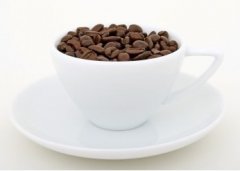Explain the history of decaf coffee
Especially in recent years in China, there are many topics talking about how caffeine is harmful to people's health, whether it is true or hearsay, but coffee still scares many friends who like it. Then low-caffeinated coffee will meet the needs of these friends.

In the Customs Import and Export regulations of the people's Republic of China, the official name of decaffeinated coffee is: caffeinated coffee beans. Literally, we can clearly see that the processing method of decaffeinated coffee beans is to soak the raw coffee beans in liquid to remove caffeine, because caffeine is a white crystal powder that is very soluble in water. So what kind of liquid is used to remove caffeine? These are the three most commonly used processing methods in the world:
1. Reagent leaching method. This is a traditional method of caffeine leaching that appeared earlier, but the residue of the reagent, such as benzene or other harmful substances, will affect the health of drinkers.
2. Swiss water immersion method. It is to soak the raw coffee beans in higher temperature water for a period of time, and then use activated carbon to absorb caffeine, which has the greatest advantage of avoiding the residue of harmful substances or heavy metals in the reagent, so that drinkers can drink safely.
3. Carbon dioxide leaching. This is one of the latest and expensive leaching methods. Gaseous carbon dioxide will become liquid at more than 300 times atmospheric pressure. Using this liquid carbon dioxide to remove caffeine from raw coffee beans can remove caffeine content to the maximum extent and maintain the taste. However, due to the high cost of processing, this kind of low-caffeinated coffee is expensive on the market and is rarely available in China.
Compare three caffeine treatments: Swiss water extraction is the healthiest and moderately priced low-caffeinated coffee.
Decaffeinated coffee, because it removes caffeine in the process of being soaked, and requires pretreatment processes such as steaming, boiling and soaking in high-temperature water before soaking, so it has a certain effect on the taste of coffee. Most low-caffeinated coffee has some characteristics similar to roast meat or roasted butter, acidity is basically undetectable, but if the roaster is skilled. It can still bake a rich, sweet, decaffeinated coffee. At the current level of processing, the flavor of decaffeinated coffee is still in a state where you can't have both fish and bear's paw. If you are afraid of caffeine and can't bear to push away the cup of coffee at hand, I'm afraid you'll have to tolerate sacrificing some coffee flavor as a price.
So Uncle Dou named his decadent Costa Rican coffee "escape", which means something like that. Uncle Dou wrote a message to this coffee: "No matter how far I run, I can't get out of your sight of love." this is a decaffeinated coffee treated with Swiss water. Uncle beans baked them in a special way, I hope you can taste the flavor of baked butter, full mellow and balanced taste, but it is very sweet.
Important Notice :
前街咖啡 FrontStreet Coffee has moved to new addredd:
FrontStreet Coffee Address: 315,Donghua East Road,GuangZhou
Tel:020 38364473
- Prev

A few tips for a rookie to enter the coffee world
How does a rookie enter the world of coffee?
- Next

Drinking coffee is also a kind of culture to learn taste.
In Europe, coffee culture can be said to be a very mature form of culture. from the entry of coffee into this continent to the emergence of the first coffee shop in Europe, coffee culture is developing at an extremely rapid speed, showing extremely exuberant vitality.
Related
- How did the Salvadoran coffee industry develop in Central America?
- What exactly does the golden cup extraction of coffee mean?
- The Origin of Coffee flower
- [2023 Starbucks World Earth Day] there are more meaningful things besides free Starbucks coffee!
- What kind of coffee is there in Spain? 9 Flavors of Spanish Coffee
- Aromatic African coffee| Kenya's coffee culture and historical production area
- Liberica Coffee Bean knowledge: the characteristics of Liberian Coffee beans of the three original species of Coffee beans
- The origin and formula of Spanish latte introduces the taste characteristics of Bombon coffee in Valencia, Spain.
- How to adjust the solution of over-extracted coffee
- What is the tasting period of coffee beans? What is the period of coffee and beans? How should coffee wake up and raise beans?

